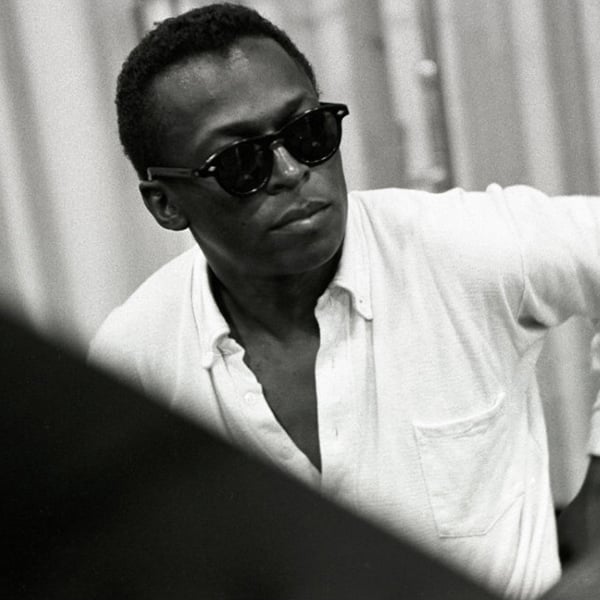
A crowning achievement—in terms of small band, hard bop interplay. A farewell of sorts—to the post-bop way of handling harmony and rhythm, and to some of Miles’ mainstay sidemen. An excellent example of how the addition of one single player—in this case the loquacious alto saxophonist Cannonball Adderley—can turn the heat up exponentially, especially when placed alongside one as long-winded as Coltrane.
Milestones is all these things—and more. Miles’ solos on tracks like “Dr. Jackle” are among the most incendiary of his recorded legacy, drawing their drive from his first true love, bebop. Yet his modern, edgy improvisation on the next track—“Sid’s Ahead” (a sly reworking of “Walkin’”)—suggests the modal ideas he’s begun to consider, testing the brakes on bebop’s fast-moving harmonies. In fact, the title track, a Miles original that features drummer Philly Joe Jones’ signature offbeat rim-shot (“The Philly Lick”), is regarded as a preliminary sketch for the modal ideas that would come into play on his next album with Gil Evans—not to mention Kind of Blue.
Milestones is indeed a goodbye—the last time Miles would record with two of his great 1950s quintet: pianist Red Garland leaving in the middle of the recording sessions; Jones departing not long after. Their replacements—Bill Evans and Jimmy Cobb—would join Cannonball, Coltrane and Paul Chambers to create perhaps the all-star lineup to outshine all others.
Milestones works on many levels, and has many gems to offer: Garland’s star-turn—the trio performance of “Billy Boy” that also features an expressive arco solo by Chambers—pays tribute to Ahmad Jamal in song choice, open feel, and structure. The fleet, push-and-pull of Monk’s “Straight, No Chaser” that benefits from the fact that Coltrane had spent the previous summer playing and studying with the pianist.
Then there’s another spirited take of the Dizzy Gillespie burner “Two Bass Hit;” the earlier version from the sessions to Miles’ debut album for Columbia (not included on the original release). Want to know how far an already tight band could come in three years? Want to hear how the Columbia engineers had gotten their act together capturing the detail and depth of Miles’ sound and each of the players?
Compare the first half-minute of the two versions of “Two Bass Hit,” from 1955 and 1958. Miles and Columbia were working well together. The next album—Porgy and Bess—proved that even more.
















